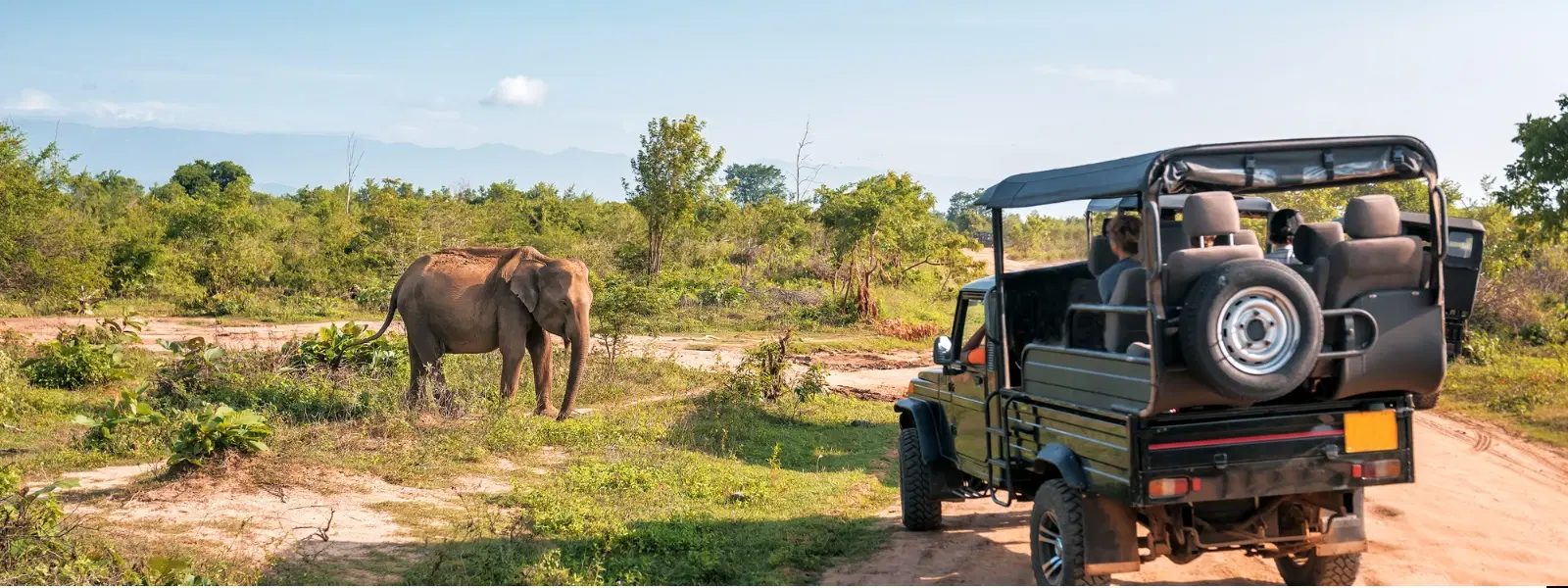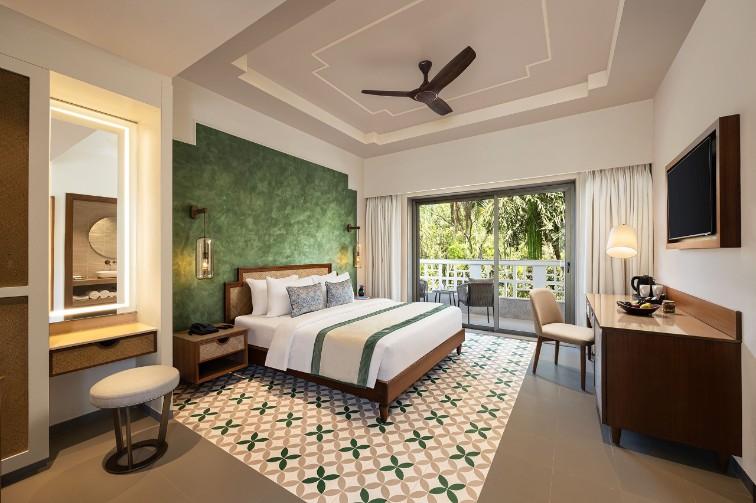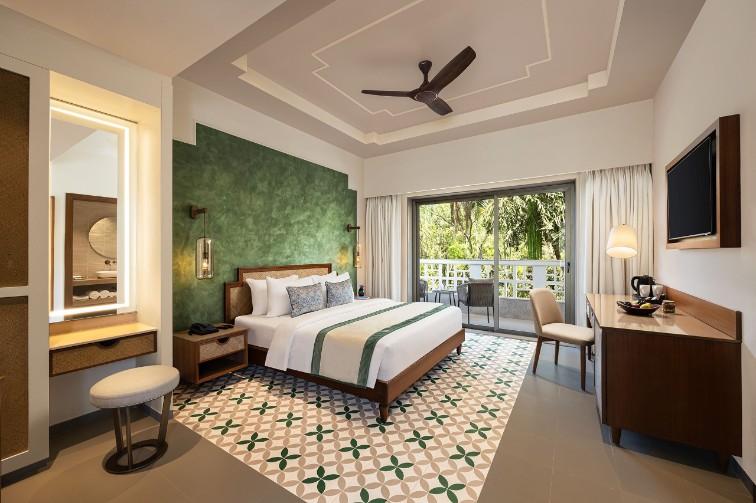
Hotels
•05 min read

Imagine a land where the forests whisper secrets of elusive tigers, where playful elephants roam vast landscapes, and where every sunrise paints a picture of untouched wilderness. Kabini, with its pristine beauty and abundant wildlife, offers a magical escape for nature enthusiasts. This comprehensive guide is designed to help you pinpoint the best seasons for unforgettable safaris in Kabini. From insights on seasonal weather patterns to expert travel tips and recommendations for hotel bookings, you'll learn how to make the most of your Kabini adventure.
The rhythm of Kabini's natural world is dictated by the seasons. Each period of the year triggers distinct animal behaviors, altering their visibility and interaction patterns. During cooler months, for instance, wildlife tends to congregate around water sources, increasing the likelihood of spotting elusive predators like tigers and leopards. On warmer days, animals may retreat into dense foliage, making them harder to detect. By choosing the right time to visit, you greatly enhance your safari experience and witness nature at its most active and engaging.
Kabini's landscape shifts dramatically over the year, reflecting the region's diverse climatic moods. With its proximity to Nagarhole National Park, Kabini acts as a vibrant extension of one of the world's finest wildlife reserves. Whether you’re awed by dry, sunlit vistas in the summer or enchanted by the serenity of a dewy winter morning, understanding these transformations is key to planning an optimal safari. Each season offers a different backdrop, assuring that every visit is a unique experience filled with thrilling wildlife encounters.
Kabini’s winter is a period of cool, dry weather that creates a comfortable environment for both explorers and wildlife. The crisp air and clear skies not only enhance animal sightings but also provide excellent conditions for photography. This is the most popular time to embark on a safari, when the natural world around you is at its most inviting, and every rustle in the underbrush could signal a majestic tiger or a stealthy leopard.
As the mercury rises, Kabini transforms under the relentless warmth of the summer sun. The arid environment causes vegetation to thin out, unveiling clear paths and waterholes. This makes it easier to track animals and capture striking photographs, which is why many safari enthusiasts are drawn to this period. While the heat can be intense, the rewards of witnessing dynamic wildlife behaviors in the golden light of summer are well worth it.
The monsoon breathes life into Kabini, drenching the forest and rejuvenating its lush foliage. Although the heavy rains can sometimes pose challenges, such as restricted accessibility and occasional trail closures, the landscape is transformed into a vibrant tableau of green. If you are comfortable with unpredictable weather, soaking in the fresh air and reveling in the natural beauty can be particularly rewarding. Bird watchers, especially, find the monsoon season a treat as migratory species add color and movement to the dense canopy.

Choosing between the busy peak season and the quieter off-peak months depends on your personal travel goals. Winter, being the peak season, is favored for its excellent wildlife visibility and favorable weather, yet it comes with higher prices and more tourists. In contrast, the monsoon offers solitude and striking natural landscapes at a lower cost, though it may limit some safari operations. Understanding these nuances will help you decide the optimal time for Kabini vacations based on your interests and budget.
For those seeking a close encounter with nature's stealthiest predators, the winter months (November to February) are the definitive period to visit Kabini. The cooler climate drives wildlife to congregate around limited water sources, increasing the probability of spotting tigers and leopards. This season firmly establishes Kabini's reputation as a premier location for big cat sightings, where every safari excursion can culminate in a breathtaking encounter.
Bird lovers and photographers are in for a treat during the summer and monsoon seasons. As migratory birds flock to Kabini, the region transforms into a vibrant canvas. The summer's dry bushland offers excellent light for stunning photographs, while the lush monsoon landscapes provide a rich, colorful backdrop that adds depth and contrast. Capture every fleeting moment with ease if you plan your visit around the specific calls of Kabini’s feathered residents.
Kabini is not just about vehicular safaris. Depending on the season, you might enjoy boat safaris, engaging nature walks, or even local cultural tours that explore the surrounding villages. In winter, the cool air makes morning walks especially delightful, while the warm and dry summer afternoons are perfect for riverside excursions. Monsoon pulses with a different rhythm, inviting those who seek the serene beauty of the rain-soaked wilderness.
Pro Tip from Tata Neu: "Did you know? Winter is the best season for safaris in Kabini, offering unparalleled chances to spot elusive wildlife like tigers and leopards. For an unforgettable experience, book your stay at eco-friendly lodges that enhance your connection with nature."
Winter: Pack warm clothing to layer up during chilly mornings and evenings. Include a light jacket and scarf for additional comfort.
Summer: Bring light, breathable fabrics, sunglasses, hats, and plenty of sunscreen. A reusable water bottle is also a smart inclusion.
Monsoon: Waterproof gear like rain jackets, waterproof shoes, and quick-dry clothing are crucial. Protect your camera and gadgets with waterproof covers or bags.

Accommodation in Kabini can become fully booked during peak seasons, so it is wise to secure your hotel well in advance. Many preferred lodges and hotels offer packages that not only ensure comfort but also enhance your immersion in the natural surroundings. Favoring eco-friendly resorts that blend with nature can add an element of charm to your stay, and many lodgings are strategically located near Nagarhole National Park, ensuring you are just minutes away from the wildlife action.
An ideal trip to Kabini usually spans 2-3 days, providing ample time to engage in multiple safari drives, nature walks, and local excursions without feeling rushed. If you're an avid wildlife photographer or seeking a deep-dive into nature, consider extending your stay. In winter, a shorter trip is often satisfying due to the concentrated wildlife activity, whereas the monsoon might require a prolonged period to fully appreciate the rejuvenated ecosystem.
November to February is considered the best time due to the pleasant weather and high chances of wildlife sightings.
A 2-3 day stay is optimal to enjoy safaris, nature walks, and other activities without feeling rushed.
Kabini’s exclusivity, premium lodges, and high demand during peak safari seasons contribute to its pricing.
While safaris may be limited during heavy monsoon rains in July, Kabini is not entirely closed. Activities like bird watching and nature walks might still be available.
Kabini's charm is revealed through its ever-changing landscapes and abundant wildlife, making it a coveted destination for nature enthusiasts throughout the year. Winter remains the top season for those in search of majestic animal encounters, particularly tigers and leopards, while the summer offers clear vistas and excellent photographic opportunities. Meanwhile, the monsoon, though challenging for some, unveils a lush, vibrant ecosystem that appeals to bird watchers and nature lovers alike. By understanding the unique perks of each season and gearing up with the right travel tips, you can design a well-timed trip that promises incomparable moments and memories in the heart of Kabini.